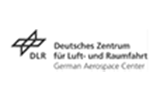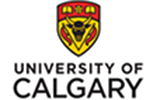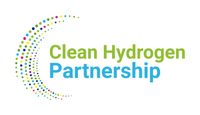Partner description
Commissariat à l’Energie Atomique et aux Energies Alternatives (CEA)
Description
CEA is a French government-funded technological research organization. With more than 15,000 researchers and co-workers, its activities cover four main areas: Energy, Defense & security, Health & information technologies, and Fundamental research. Located in Grenoble, the Laboratory for Innovation in New Energy Technologies and Nanomaterials (LITEN) is around 1,000 people working on energy R&D (fuel cell, batteries, biomass, and solar application). CEA-LITEN has a unit dedicated to energy for transport application, which has more than 15 years experiences in fuel cells research and development. More than 50 persons are currently working on PEMFC components and stacks for transportation and stationary applications, in cooperation with the industry: membrane & MEA fabrication, bipolar plates’ design & production, microstructure/electrochemical characterization, physical properties measurements, local in-situ instrumentation and multi-scale modelling. Since 2010, CEA-LITEN is also conducting LCAs and Techno-economic assessments on materials developed specifically for renewable energy applications.
Infrastructure
CEA will use different platforms for FURTHER. The first one is the NanoCharacterization Platform, which is one of the most advanced worldwide platform combining numerous microscopes to analyse structure and chemistry of materials from the atomic scale up to the materials scale; it will be intensively used in WP2. The second one is made of 15 single cell test stations (from 1cm2 to 350 cm2 active area) and 10 stack test stations (from 1 to 10 kW), specifically designed to evaluate the electrochemical performance and durability of the cell and also to do the operando characterisation. This platform will be used in WP1 and WP3 to test performance and durability of reference, customized and improved CCL. The third Platform consists in different ex-situ test stations to characterize transport properties of materials used in PEMFC; it will for instance be used in WP2 to derive proton and gas transport properties of ionomer films in CCL. The fourth Platform is based at ESRF (European Synchrotron Radiation Facility, located close to CEA-Grenoble). Already intensively used by CEA, specific beam time will be requested for liquid water visualization in operating PEMFC by X-ray (WP3). The last one is a virtual platform gathering all the numerical tools and developed softwares at CEA for PEMFC modelling, simulation and mechanism descriptions. This platform will be especially used in WP4 to analyse transport limitations in relationship to experiments and will also contribute to propose materials and design recommendations for future CCL.
Deutsches Zentrum für Luft- und Raumfahrt e.V. (DLR)
Description
The DLR-Institute of Technical Thermodynamics is active in the fields of renewable energy research and technology development for efficient and low emission energy conversion and utilisation. The section Electrochemical Energy Technology has long-term experience in fuel cells (SOFC, PEFC; DMFC and AFC) and production technologies e.g., plasma technology, rolling and cold dry spraying techniques. The division also has extensive experience in the characterisation of components of electrochemical energy converters with electrochemical and physical methods as well as in the diagnostics of fuel cells. Around 60 persons work in the electrochemical energy technology division, 20 persons in the field of PEFC research and development. In addition numerous people work in the analytic of components for electrochemical systems. The department for Computational Electrochemistry with a staff of currently 20 researchers focuses on the development of physical models for batteries, fuel cells and electrolysers.
Infrastructure
The department of Electrochemical Energy Technology at DLR has numerous fuel cell test stations ranging from 1cm2 active are to automotive short stack equipped with high precision MFCs for reactant flow control; vaporizer humidification; direct reactant pressure control; optionally H2 recirculation mode The test stations are home-made and can be easily adapted according to requirements of the project:
- 4 Fuel single cell test stations for cells of 25 and 50 cm²
- Small active areas test bench for cells of 1 cm²
- Cryo-Test bench for cold start at -20°
- Test station for automotive short stacks with 60 cells up to 300 cm²
- Test stations for 2kW short stacks with 15 cells up to 150 cm²
- Potentiostats for electrochemical characterization (up to 16 parallel channels)
- DLR’s Segmented Cell as standard tool for monitoring current density and temperature distribution
- Laser absorption to monitor humidification at gas outlets
- Labs for physical-chemical analysis include devices for: XPS, XRD, SRF, SEM/EDX, FTIR, Raman, Porosimatry
The department for Computational Electrochemistry at DLR has developed in-house software for the
simulation of fuel cells which will be used in the project:
- NEOPARD-X software for multi-scale simulations of cell performance and degradation
- Lattice-Boltzmann code for microstructure resolved simulations
Imperial College of Science Technology and Medicine (ICL)
Description
Imperial College London is rated among the world’s top Universities (c.f. THE/QS rankings) with a reputation in science, engineering, business and medicine. Its mission is to benefit society through excellence in science, engineering, medicine and business. Located in the heart of London, Imperial is a multidisciplinary space for education, research, translation and commercialisation, harnessing science and innovation to tackle global challenges. Research in this project will take place in the Department of Chemistry which as a strongly interdisciplinary (Chemical Biology, Catalysis & Synthesis, Electrochemistry, Advanced Materials, Analytical Sciences, and Energy). Consistently rated amongst the world's best universities, Imperial is committed to developing the next generation of researchers, scientists and academics through collaboration across disciplines.
Infrastructure
The laboratory is equipped with five electrochemical work stations to perform any kind of electrochemical studies, fuel cell test stations, deposition techniques and a range of analytical instrumentation for studying fuel cell electrodes.
Toyota Motor Europe NV (TME)
Description
TOYOTA MOTOR EUROPE (TME) is the regional headquarters of Toyota in Europe. Located in Brussels (Belgium), TME acts as the centre for all European operations including the principal areas of engineering, manufacturing, marketing & sales activities. Established in 1987,the Toyota Technical Centre in Zaventem (Belgium) is home to TME’s European Research & Development (R&D) facility, notably doing leading-edge research in Europe for the Toyota group in the field of batteries, fuel cells, catalysts. Besides its in-house activity (mostly related to battery and fuel cell evaluation), Advanced Material Research group has several R&D projects with European universities and research institutes related to the different technologies enumerated above. The main role is to identify breakthrough technologies in Europe related to those area, to promote research on the new identified seeds, to secure those technologies via IP protection and finally to promote those research achievements within the Toyota. Over the last 5 years our members have been gradually more involved in European and national funded projects and are taking an active role in several consortia. In addition, members are involved in advisory boards of different associations and partnerships.
Infrastructure
TME Zaventem site is equipped with several laboratories for materials characterization and component testing, including several test benches. Catalyst and MEA can be prepared and electrochemically tested. Specifically there are unique facilities for: the automated and uniform coating of disk electrodes and their electrochemical characterization and the preparation of catalysts ink with controlled and optimal rheology for membrane electrode assembly manufacturing. Single cell automotive hardware and test protocol for material screening have been specifically designed to better respond to automotive requirements and Toyota hybrid system.
Institut National Polytechnique de Toulouse (INPT)
Description
INPT (Institut National Polytechnique de Toulouse) is a technical university focussing on engineering sciences. Within INPT, IMFT (“Toulouse Institute of Fluids Mechanics” - https://www.imft.fr//) is a joint research laboratory run by the CNRS, the National Polytechnic Institute of Toulouse (INPT) and the Paul Sabatier University (UPS). IMFT has a staff of about 209 people, with 71 academics (including 15 CNRS researchers), 36 engineers, technicians and administrative staff, about 80 PhD students and 22 post-docs. The porous and biological media group M&B is one of the six research groups of IMFT and is nationally and internationally known for its research on transport phenomena in porous media. In direct link with the present project, the works devoted to two phase flows and evaporation- condensation from pore network simulations and/or theoretical analysis within the framework of the volume averaging technique are among the best known internationally and have been published in top scientific journals (Physical Review letters, Physical Review E, Physical Review Fluids, Physics of Fluid, etc) whereas PEMFC related works have been published in specialized journals (J.of Power Sources, Electrochimica Acta, IJHE, etc).
Infrastructure
In-house pore network numerical codes (basis for the codes to be developed for the project since new developments will be mandatory)
Université Montpellier (IEM)
Description
The "Institut Européen des Membranes" (IEM), a reference laboratory at the international level in the field of membrane materials and processes is structured in 3 scientific departments: (i) Design of Membrane Materials and Multifunctional systems (DM3), (ii) Interfaces, Physical Chemistry and Polymers (IP2) and (iii) Membrane Process Engineering (GPM). The laboratory research activity is organized around 4 transversal thematic axes: (i) membranes of the future, (ii) membranes for hydrogen and energy production (systems for energy generation, gas purification and separation, energy storage), (iii) membranes for the treatment of water and (iv) membranes for health.The cluster “Ionic and electrochemistry”, belonging to the IP2 department groups 11 researchers experts in solid state ionics, vibrational spectroscopy, electrochemistry and electrocatalysis.
Infrastructure
- LABRAM1B confocal Raman spectrometer (Horiba Jobin-Yvon s.a.s.) coupled to an Ar–Kr laser and 2 workstations for microscopic analysis.
- home-made test benches for temperature, relative humidity and flow regulation of the FC reactant gases.
- Biologic potentiostat-galvanostat-impedancemetre VSP equipped with a VMP 2B booster for the FC electrochemical control
Paul Scherrer Institut (PSI)
Description
PSI is the largest research institute for natural and engineering sciences in Switzerland, with major research directions in matter and materials, energy and environment, and human health. A key factor to the success of PSI is the operation of large research facilities (Neutron source, Synchrotron, Muon source and Free Electron Laser), which are both used extensively for the research conducted at PSI, but also operating as facilities for external users. The electrochemistry laboratory, with 70 employees, is the leading centre for electrochemistry research in Switzerland and focuses on energy storage and conversion applications. Research includes novel materials and cell designs, as well as the development of advanced characterization methods to understand the current performance and durability limitations.
Infrastructure
- Pulsed gas analysis (PGA) setup for the analysis of mass transport losses in operating fuel cells
- Multi-cell setup for the simultaneous operation and imaging of up to 6 differential cells ( via neutron radiography)
Hochschule Esslingen (UES)
Description
The UAES is one of the largest and best-ranked Universities of Applied Sciences in Germany. It has about 5000 students at 3 sites in and around Esslingen in the southwest of Germany (Baden-Württemberg). UAES consists of 11 faculties and several Institutes. The “Institute of Fuel Cell Technology (IBZ)” where the Laboratory of Physics in the faculty of Basic Sciences is a member, is dedicated to application and research in the field of fuel cells. The group involved in this project is experienced in atomic force microscopy and scanning electron microscopy.
Infrastructure
- 2 state of the art AFMs (Bruker Multimode 8 (with TUNA, SThM and KPFM) and Bruker ICON in Glovebox)
- FE-SEM (JEOL JSM7200F)
- Impedance Spectroscopy
- Electrochemistry and chemical laboratories
- GeoDict (Simulation Software)
The Chemours Company (CC)
About The Chemours Company
The Chemours Company (NYSE: CC) is a global leader in titanium technologies, fluoroproducts, and chemical solutions, providing its customers with solutions in a wide range of industries with market-defining products, application expertise and chemistry-based innovations. Chemours ingredients are found in plastics and coatings, refrigeration and air conditioning, mining, and general industrial manufacturing. Our flagship products include prominent brands such as Teflon™, Ti-Pure™, Krytox™, Viton™, Opteon™, Freon™ and Nafion™. In 2019, Chemours was named to Newsweek's list of America's Most Responsible Companies. The company has approximately 7,000 employees and 28 manufacturing sites serving approximately 3,700 customers in over 120 countries. Chemours is headquartered in Wilmington, Delaware and is listed on the NYSE under the symbol CC.
For more information, we invite you to visit chemours.com or follow us on Twitter @Chemours or LinkedIn.
The University of Calgary (UCA)
The University of Calgary is a publicly funded research-intensive university founded in 1966, with 14 faculties offering more than 250 academic programs, and more than 50 research institutes and centres. It has a budget of $1.3 Billion. The enrolled students total 30,000 comprising 24,000 undergraduates and 6,000 graduate students.











